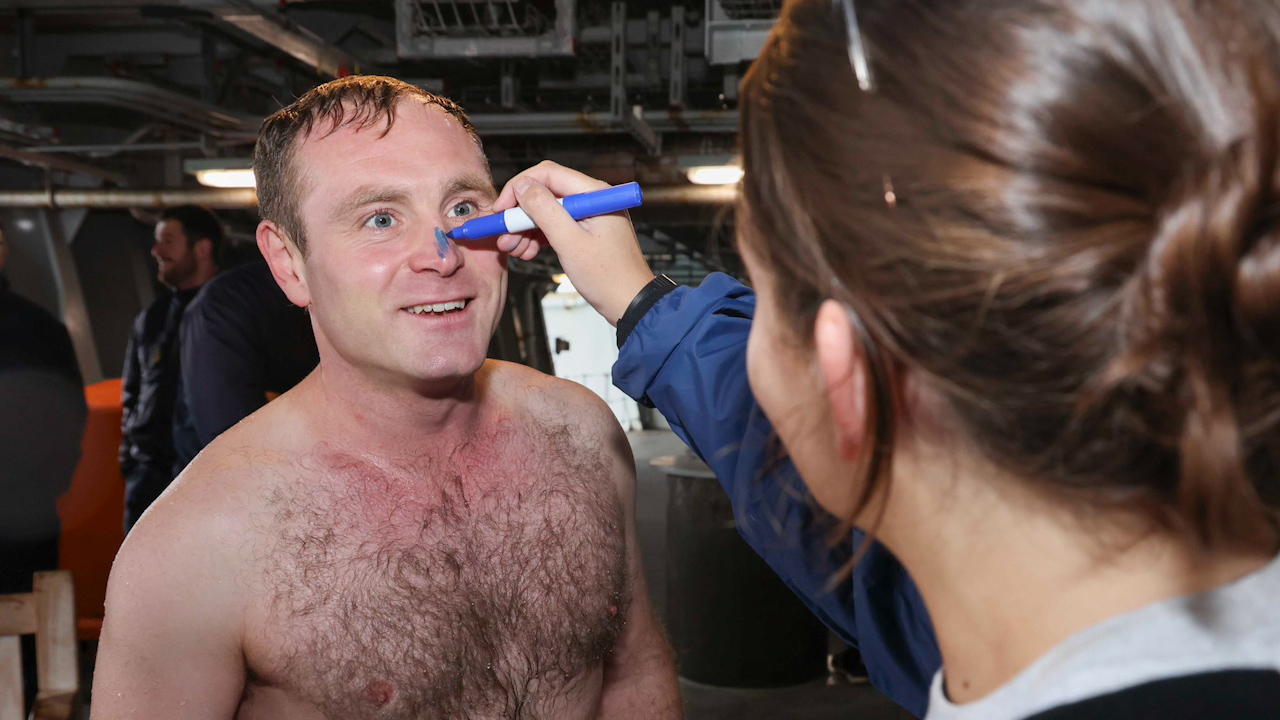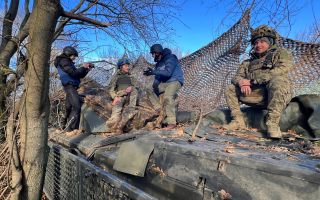
Royal Navy's 'blue nose' ceremony explained as RFA Lyme Bay enters Arctic Circle

RFA Lyme Bay is the latest vessel to enter the Arctic Circle and take part in the traditional 'blue nose' ceremony.
But what does the tradition involve, and why do personnel do it?
Originally a Royal Navy tradition – it includes the Royal Fleet Auxiliary as it delivers worldwide logistic and operational support to Royal Navy and Royal Marines operations – the 'blue nose' ceremony sees sailors get their noses painted blue when their ship passes into the Arctic Circle.
- Exercise Cold Response: Royal Navy ensures practice makes perfect in Arctic
- Crossing the Line explained: Centuries-old Navy tradition to gain acceptance of 'King Neptune'
- Sir Ernest Shackleton's ship Endurance found 107 years after sinking off Antarctica
An 'Order of the Blue Nose' certificate is also awarded to the sailors making their first crossing of the polar region.
It is not just the personnel that mark the occasion with blue painted noses – after crossing the Arctic Circle, it is tradition to paint a ship's bullring blue, showing it has passed 66.56° north.
The tradition often includes variations which can range from dressing up as Vikings or having crew members swim in cold water.
In October 2023, HMS Queen Elizabeth held the Blue Nose ceremony on her first visit to the Arctic Circle. This saw personnel get into ice baths on board as well as having their noses painted.
The US Navy also has a ceremony to mark a sailor's maiden voyage into Arctic waters.
Personnel must complete an obstacle course before an audience with Boreas Rex, the King of the North, who decides if their frozen quest was a success by marking them with a blue nose.









